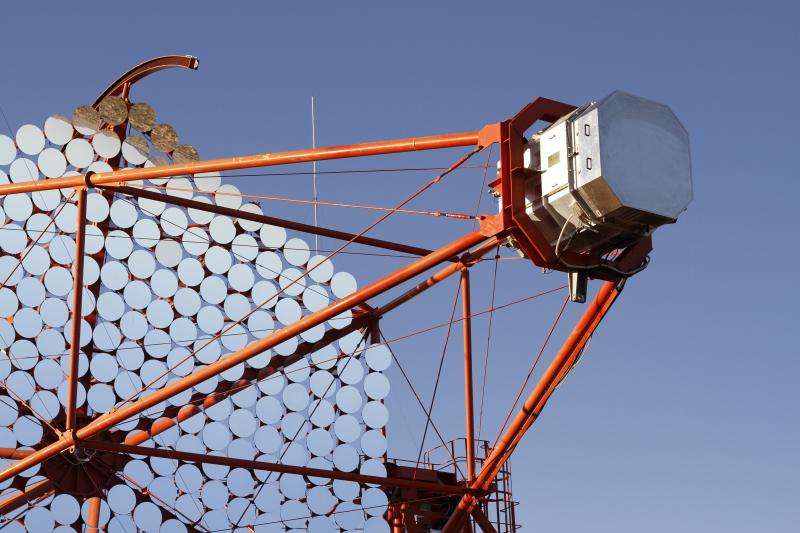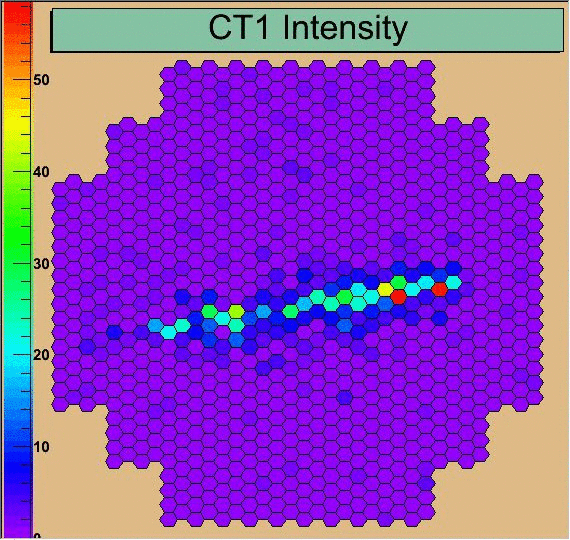First gamma-ray Images from new H.E.S.S. camera

The first of four new gamma-ray cameras has recorded its first light at the gamma-ray observatory H.E.S.S. (High Energy Stereoscopic System) in Namibia. In July, a team of ten colleagues from DESY Zeuthen had upgraded the camera and installed 200 electronic boards and a new ventilation system. After the integration into the network and data acquisition system, first cosmic gamma-ray images could now be acquired.
With H.E.S.S. physicists look at some of the most energetic objects and processes in the universe, including supernova explosions, active galaxies with enormous black holes and fast rotating corpses of burnt-out giant suns. The cameras of the H.E.S.S. I telescopes are in operation since 2003. They increasingly suffer from ageing and the harsh environmental conditions in the Khomas highland. To allow for continuous stable operations in the coming years, a major hardware upgrade for these technologically sophisticated devices was developed in the past two years. The new components were tested in an identical copy of the camera, which was set up in Zeuthen.
"These tests in the lab were quite essential," concludes Stefan Klepser, project leader at DESY, "but they cannot fully mimic all possible problems that occur in the field. I'm very relieved that all installations could really be accomplished within the three weeks that we planned for." All together, 20 engineers and scientists took part in the installations on site, half of which were from DESY, and the other half were H.E.S.S. colleagues from Windhoek, Heidelberg, Paris and Berlin.
The new, faster camera can resolve and digitise the light flashes produced by gamma rays in the atmosphere, which only last few nanoseconds. "The design of the electronic boards was a big challenge. Many of the boards are composed of more than 1000 single pieces," explains electronics designer Holger Leich. "Since we could produce those at DESY in Hamburg, we could ensure the high quality standards that we needed."

Still, the mere installation of hardware components is only half the way to a working camera. "The software for the new camera was all developed from scratch," says Gianluca Giavitto from Zeuthen, who led the integration of the new camera into the whole telescope array that took several weeks. "And since the whole camera works with Ethernet technologies, we have made use of very modern technologies, part of which are also used at Google or Facebook. This has simplified the development, and improved the stability of the system."
It will need more time to get to a complete calibration and analysis of the new system, but Christian Stegmann, head of DESY Zeuthen, is confident: "These images demonstrate the basic functionality of the camera, which means green light for the production of the remaining three, to be installed in 2016." His confidence is shared by collaborators at the University in Leicester, England, who also contributed an electronic board to the project, and colleagues from the IRFU institute in Saclay, France. The latter have contributed the analog readout chip NECTAr, which was designed for application in the Cherenkov telescope array (CTA), and found its first technical application in the new H.E.S.S. camera.
Provided by Helmholtz Association of German Research Centres



















